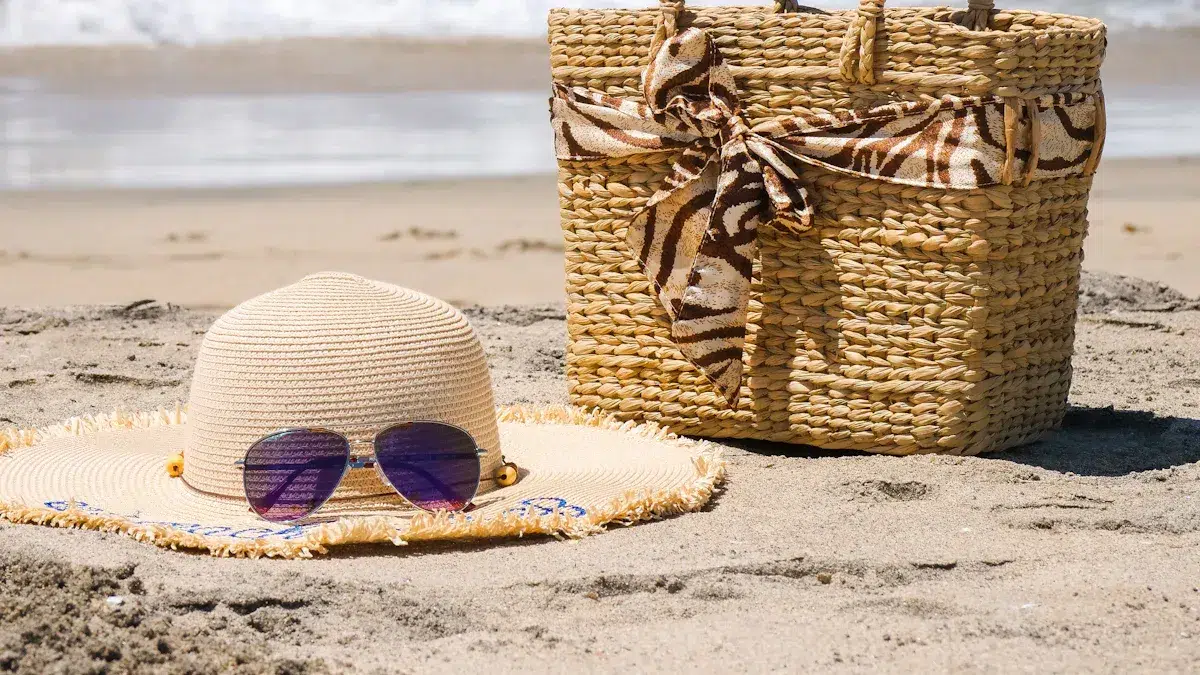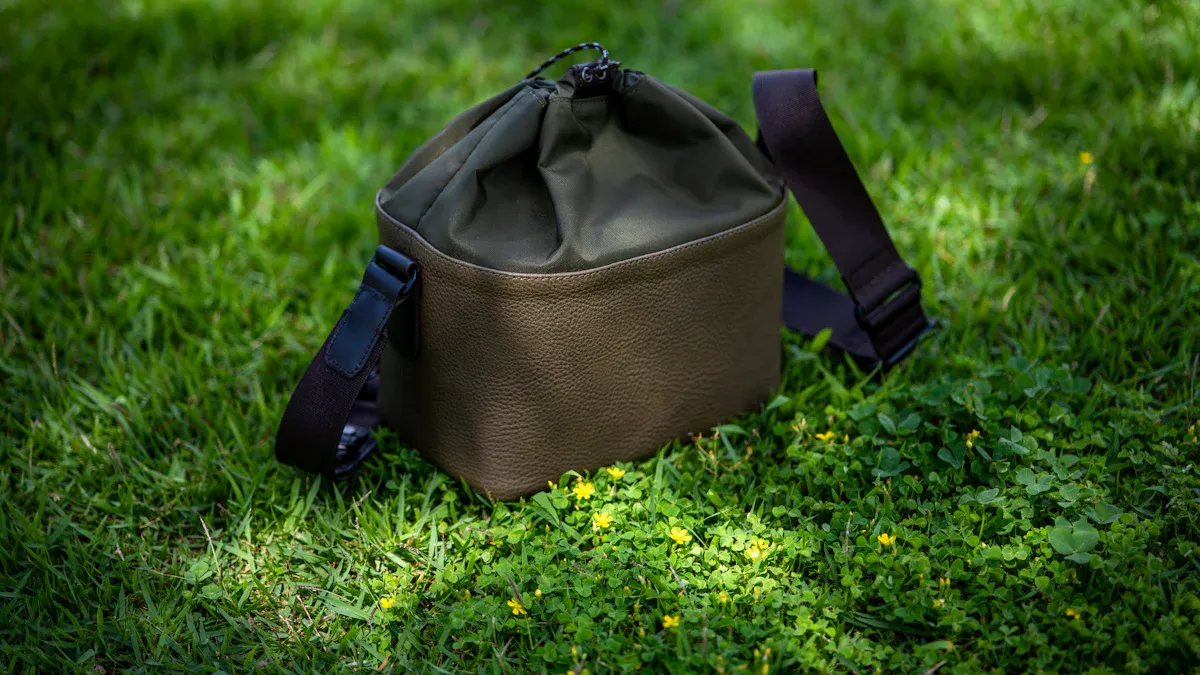
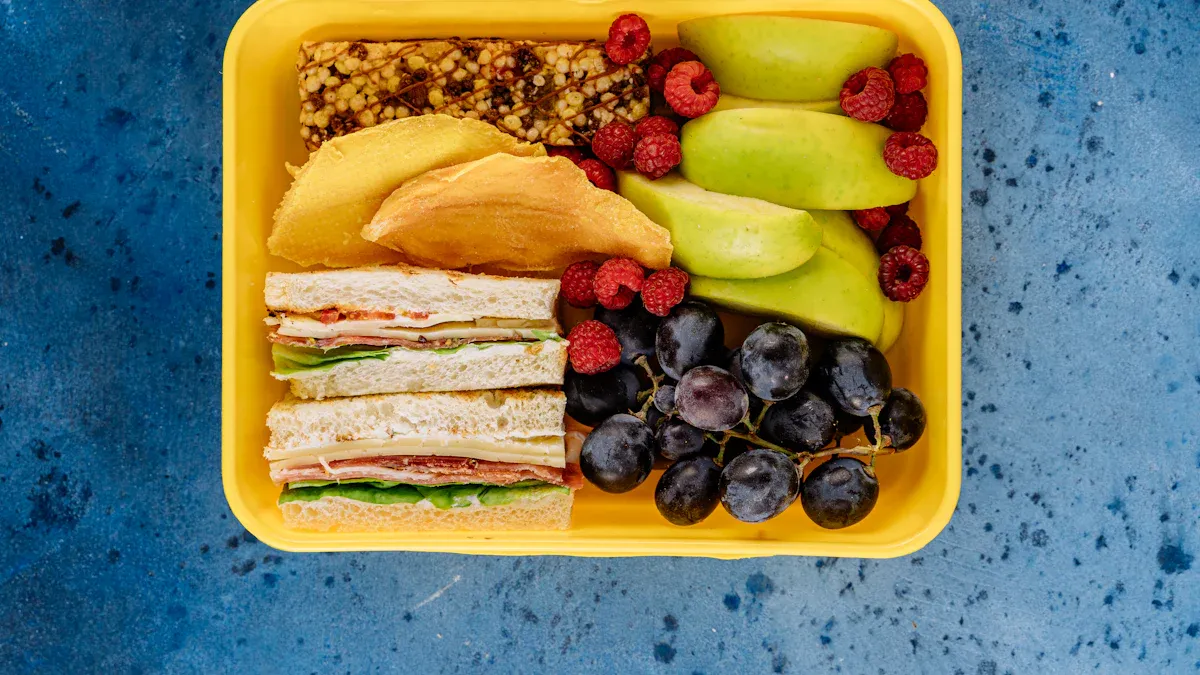
You want a hard shell cooler lunch box that keeps your food fresh and safe wherever you go. Many people use these boxes for outdoor adventures, busy workdays, or school lunches because they last long and keep meals cold. Popular uses include:
- Weekend camping trips or fishing adventures where you need ice retention for days
- Carrying home-cooked meals for work, school, or meal prepping for health and convenience
Choose a hard shell cooler lunch box that matches your lifestyle. Trusted brands like KUER deliver quality and strong performance.
Key Takeaways
- Choose a hard shell cooler lunch box with strong insulation and a tight seal to keep your food cold and fresh for hours.
- Look for durable materials and sturdy construction to protect your cooler from drops and rough use.
- Pick the right size and compartments to fit your meals and keep food organized without extra bulk.
- Select a cooler with comfortable handles or straps to carry easily during your daily routine or outdoor trips.
- Clean your lunch box regularly using removable liners and mild soap to prevent stains, odors, and keep food safe.
Insulation and Cold Retention in a Hard Shell Cooler Lunch Box
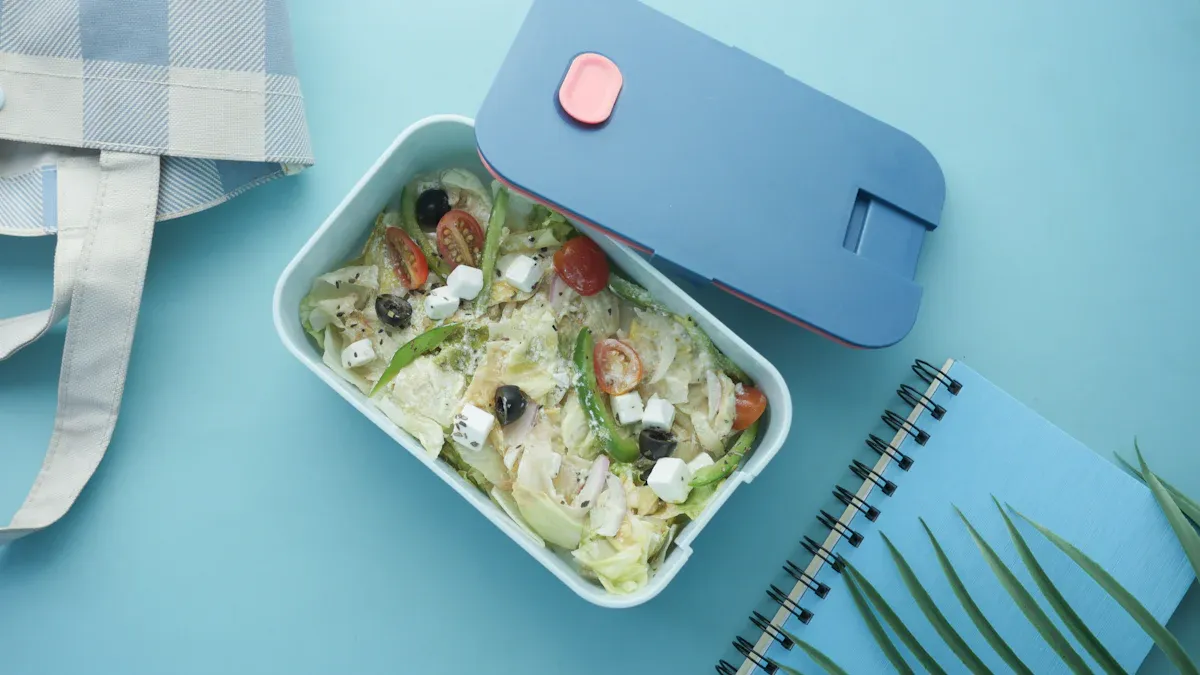
Why Insulation Matters
When you pack your lunch, you want it to stay cold and fresh until you are ready to eat. Insulation is the key feature that keeps your food safe in a hard shell lunch cooler. A well-insulated lunch box slows down the warming process, so your drinks stay chilled and your sandwiches do not spoil. If you use an insulated lunch box for work, school, or outdoor trips, you can trust it to keep your meals at the right temperature for hours.
A hard shell lunch cooler often outperforms soft-sided options. You can see the difference in ice retention and durability in the table below:
| Feature | Hard-Sided Coolers | Soft-Sided Coolers |
|---|---|---|
| Ice Retention | 36-48+ hours | 24-48 hours |
| Construction | Thick walls, tight seals | Insulated fabric, flexible |
| Durability | Excellent, impact-resistant | Good, flexible |
| Portability | Heavier, bulkier | Lighter, compressible |
| Recommended Use | Extended trips, tough conditions | Day trips, easy carrying |
You get longer cold retention and better protection with a hard shell lunch cooler, making it a smart choice for demanding situations.
Types of Insulation in Hard Shell Lunch Coolers
Not all insulation is the same. The best hard shell lunch cooler uses advanced materials to lock in cold. Polyurethane foam and polystyrene foam are common choices. These materials block heat and keep your food cold for a long time. Some coolers use multi-layered foam with reflective linings. This design bounces heat away and adds another layer of protection.
Here is a look at some top models and their insulation features:
| Cooler Model | Insulation Material/Technology | Key Insulation Features and Benefits |
|---|---|---|
| Stanley Adventure Hard Shell | Extra polyurethane foam | Cold retention up to 27 hours; leak-resistant gasket |
| Pelican Personal Cooler 8 | Dual-compound insulation | All-day cold retention; rugged shell |
| KUER Hard Shell Lunch Cooler | Advanced molded insulated shell | Strong insulation; easy to carry |
You should look for an insulated lunch box with thick foam and a tight seal. This combination gives you the best cold retention.
What to Look for in Cold Retention
When you choose a hard shell lunch cooler, check how long it can keep ice or cold packs frozen. Look for features like thick walls, secure latches, and a tight gasket. These details help your insulated lunch box perform well, even on hot days. If you plan to use your insulated cooler for long trips or outdoor work, pick a model with proven ice retention. A good hard shell lunch cooler will keep your food safe and fresh, so you can enjoy every meal.
Durability and Build Quality of Hard Shell Lunch Coolers
Materials Used in Hard Shell Cooler Lunch Boxes
When you choose a hard shell lunch cooler, you want it to last through daily use and tough conditions. Manufacturers use strong materials to build these coolers. You often see heavy rubber, treated nylon, heavy-duty nylon, treated polyester, hard plastic, and reinforced plastic. Each material gives the hard shell lunch cooler a different level of protection and strength.
| Material Type | Durability Impact on Hard-Shell Lunch Coolers |
|---|---|
| Heavy Rubber | Highly resistant to punctures and wear; ideal for rough handling and drops, enhancing long-term durability. |
| Treated Nylon | Strong resistance to punctures and wear; great for tough environments. |
| Heavy-Duty Nylon | Excellent durability; stands up to daily wear and tear. |
| Treated Polyester | Durable and resists wear, helping the cooler last longer. |
| Hard Plastic | Provides solid protection; moderately durable but less flexible than fabrics. |
| Reinforced Plastic | Rigid and tough; resists impacts and rough use very well. |
Advanced manufacturing methods like rotomolding and blow molding create thick, even walls. These methods help your hard shell lunch cooler stand up to drops and rough use.
Impact Resistance and Sturdiness
You want your hard shell lunch cooler to handle bumps, drops, and rough handling. The best coolers use reinforced seams, heavy-duty zippers, and leak-proof designs. These features keep the cooler strong and prevent damage. Rotomolded and blow-molded construction adds extra strength. You can trust your hard shell lunch cooler to protect your food, even in tough environments like construction sites or outdoor adventures.
Tip: Always check for reinforced corners and sturdy handles. These parts take the most stress during daily use.
Longevity and Warranty Considerations
A hard shell lunch cooler should last for years. Many top brands offer warranties to show their confidence in the product. You often see warranty periods from three to five years for hard shell lunch coolers. This warranty covers defects in materials or workmanship under normal use.
| Product Category | Warranty Period |
|---|---|
| Ultra-Tough Hard Coolers | 5 years |
| Ultra-Light Hard Coolers | 3 years |
| Soft Sided Coolers | 1 year |
When you pick a hard shell lunch cooler with a long warranty, you know the brand stands behind its quality. This gives you peace of mind and helps you get the most value from your purchase.
Size and Capacity for Your Needs
Choosing the Right Size Hard Shell Cooler Lunch Box
You want a lunch box that fits your meals and drinks without being too bulky. Hard shell cooler lunch boxes come in many sizes, so you can pick one that matches your needs. If you only carry a sandwich and a drink, a personal cooler is enough. For bigger lunches or sharing with friends, a small or medium cooler works better. The table below shows common size categories and their capacities:
| Cooler Size Category | Can Capacity (approx.) | Capacity in Quarts (approx.) |
|---|---|---|
| Personal coolers / lunch boxes | 6 cans or less | 15 quarts or less |
| Small coolers | 13-24 cans | Up to 25 quarts |
| Medium coolers | Up to 38 cans | Up to 45 quarts |
| Large coolers | 50-70 cans | 60 to 75 quarts |
| Extra-large coolers | Around 95 cans+ | Up to 100 quarts or more |
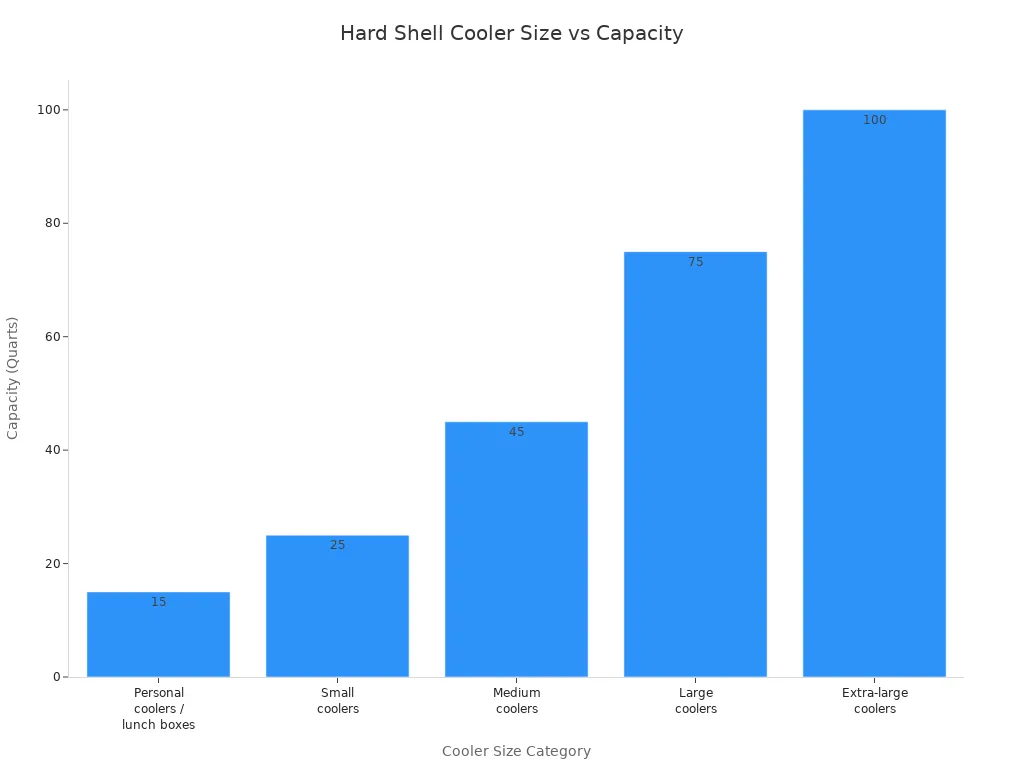
A model like the YETI Daytrip Lunch Box fits five cans and is easy to carry. You can use this size for school or work.
Storage Compartments and Organization
A good hard shell cooler lunch box helps you keep food organized. Many lunch boxes have trays or removable compartments. You can separate wet and dry foods, so your sandwich stays fresh and your fruit does not get soggy. Some designs include side pockets for ice packs. These pockets keep your food cold without mixing ice with your snacks. Removable trays also make cleaning easier and help prevent odors.
| Compartment Type | Description | Benefit for Food Organization and Separation |
|---|---|---|
| Dry Box | Separate compartment for personal items | Keeps non-food items apart from food, preventing contamination |
| Removable Inner Tray | Tray designed to hold non-perishable food items | Keeps dry food cold and separated from wet items |
| Main Compartment | Larger space for drinks or bigger food items | Prevents smushing and mixing of different food types |
| Three Compartments | Overall design feature | Separates wet and dry storage, maintaining food integrity |
| Additional Storage | Extra space under cup holder for keys and gear | Enhances organization by segregating personal items from food |
Tip: Choose a lunch box with separate compartments if you want to keep your food fresh and organized.
Fit for Your Daily Routine
Your daily routine shapes the best choice for a hard shell cooler lunch box. If you walk or bike to school, you may want a lightweight and compact box with a comfortable handle. For outdoor work or long trips, a larger box with strong insulation works better. Some people need easy-to-clean surfaces or removable liners for quick cleaning. Others look for BPA-free materials and tight seals to keep food safe. The table below shows how different routines affect your choice:
| Daily Routine Aspect | Influence on Cooler Size and Features |
|---|---|
| Amount of Food Packed | Larger coolers for big lunches or group sharing; smaller for quick trips or small meals. |
| Portability Needs | Lightweight, compact coolers with comfortable handles or shoulder straps for walking, biking, commuting, or kids. |
| Ease of Cleaning | Smooth interiors, removable trays or liners for quick cleaning to maintain freshness and hygiene. |
| Durability | Strong materials (steel, heavy-duty plastic), metal latches, impact-resistant bases for daily rough use. |
| Food Safety | BPA-free plastics, stainless steel, tight seals, and compartments to keep food safe and separate. |
| Cold Retention | Insulation quality, use of ice packs, pre-chilling, avoiding frequent opening, and shade to keep food cold longer. |
| Activities and Usage Context | Features chosen based on work, school, outdoor adventures, family outings, or kids’ needs (easy-open latches, safety). |
| Environmental Factors | Weather and sunlight exposure influence insulation and material preferences. |
You can match your lunch box to your daily needs for the best results.
Portability and Weight of Hard Shell Lunch Coolers
Handle and Strap Design
When you pick a hard shell lunch cooler, you want to carry it with ease. Many coolers come with sturdy handles that fit your hand well. Some models also include a shoulder strap. This feature lets you carry your lunch cooler bag over your shoulder, which helps when your hands are full. A good handle or strap spreads the weight evenly. You can walk, bike, or ride the bus without feeling uncomfortable. Look for a hard shell lunch cooler with a padded handle or an adjustable strap. These features make your daily routine much easier.
Tip: Choose a lunch cooler bag with a convertible strap if you want to switch between hand-carry and shoulder-carry styles.
Weight and Carrying Comfort
The weight of your hard shell lunch cooler affects how easy it is to take with you. For example, a 17-quart hard shell lunch cooler can weigh about 6.8 pounds when empty. This weight gives you a strong and sturdy box, but you should think about how much you want to carry each day. Some coolers can even support up to 300 pounds, showing their toughness. When you add food and drinks, the cooler gets heavier. Handles and straps help you manage this weight. You can carry your lunch cooler bag comfortably if you pick a model with smart design features.
| Cooler Size | Average Empty Weight | Carrying Features |
|---|---|---|
| Personal | 2–4 lbs | Handle, sometimes strap |
| Small/Medium | 5–8 lbs | Handle, often shoulder strap |
| Large | 10–20 lbs | Heavy-duty handle, wheels |
Compactness for Travel and Commuting
If you travel or commute every day, you need a hard shell lunch cooler that fits your lifestyle. Compact coolers slide easily into backpacks or fit under your desk. You can carry a single meal or a few snacks without extra bulk. These smaller coolers work well for school, work, or short trips. Larger hard shell lunch coolers give you more space for food and drinks, but they can feel bulky and heavy. Compact models focus on portability and storage. You can enjoy the benefits of a hard shell lunch cooler without giving up convenience.
Note: Compact hard shell lunch coolers are perfect for daily travel, while larger models suit group outings or longer trips.
Ease of Cleaning a Hard Shell Cooler Lunch Box
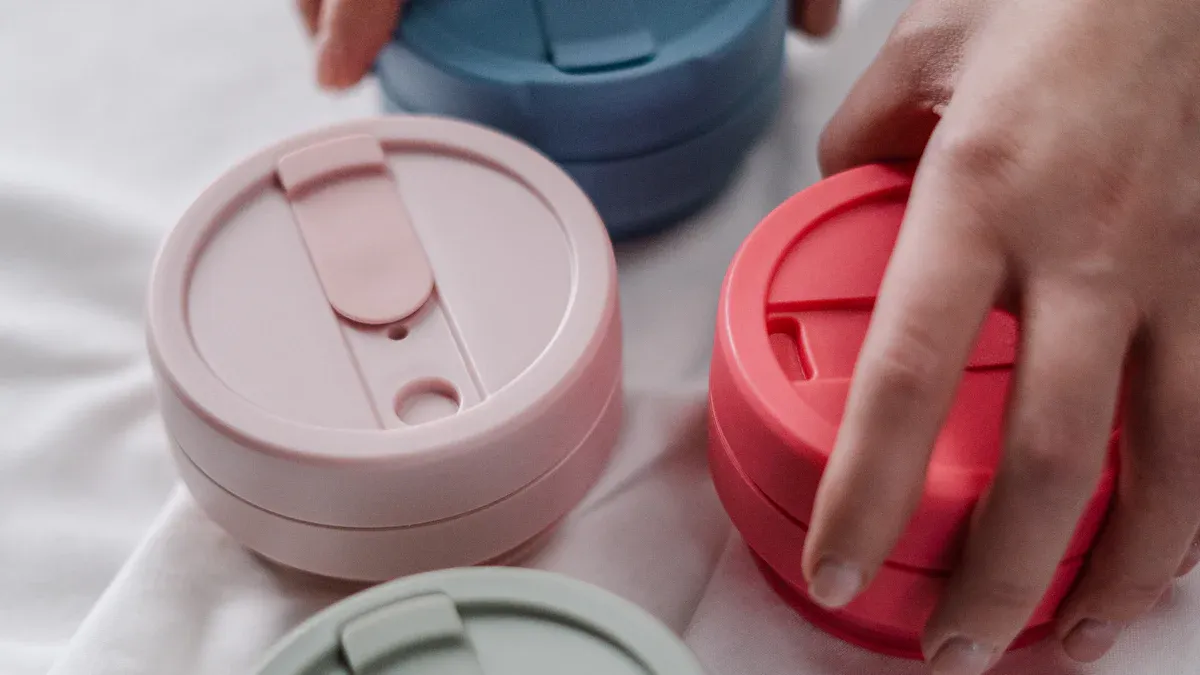
Removable Liners and Easy-to-Clean Surfaces
You want your lunch box to stay clean and fresh every day. Removable liners make cleaning much easier. You can take out the liner, wash it, and dry it before putting it back. This helps you remove crumbs, spills, and sticky spots quickly. Many hard shell cooler lunch boxes have smooth, easy-to-clean surfaces inside. You can wipe these surfaces with a damp cloth or sponge. If you see any stains, use a mild soap and water.
Tip: Always dry the inside of your lunch box after cleaning. This prevents mold and keeps your food safe.
Dishwasher Safe Options
Some lunch box parts, like utensil cases or trays, can go in the dishwasher. You can place utensil cases on the top rack and utensils on the bottom rack. This saves you time and makes sure everything gets a deep clean. Magnetic utensils need special care. You should hand wash them and keep the magnets dry to avoid rust. Ice pack sleeves can be washed by hand or in the machine, but you must dry them well before using them again.
- Place removable trays and cases in the dishwasher if the manufacturer says it is safe.
- Hand wash magnetic items and dry them right away.
- Wash ice pack sleeves and let them dry completely.
Stain and Odor Resistance
A good hard shell cooler lunch box resists stains and odors. The hard plastic shell does not absorb smells like fabric lunch bags. If you spill juice or sauce, you can wipe it up before it leaves a mark. Some lunch boxes use special coatings to stop stains from sticking. You should always clean up spills as soon as you see them. This keeps your lunch box smelling fresh and looking new.
Note: Regular cleaning and quick action against spills help your lunch box last longer and keep your food tasting great.
Food Safety Features in Hard Shell Cooler Lunch Boxes
BPA-Free and Food-Grade Materials
You want your lunch to stay safe and healthy. The materials in your hard shell cooler lunch box matter a lot. Some plastics contain chemicals like BPA (Bisphenol A), phthalates, and PVC. These chemicals can move from the plastic into your food. Experts link BPA to hormone problems, cancer, and changes in the body’s growth. Phthalates can cause reproductive issues, especially in children. PVC contains other toxic chemicals and is banned in children’s toys in many places.
- BPA is an endocrine disruptor that can affect your body’s hormones.
- Phthalates make plastics flexible but may harm your health.
- PVC and its chemicals are not safe for food storage.
Safer choices include silicone, polypropylene, stainless steel, and glass. When you pick a lunch box labeled BPA-free and food-grade, you lower your risk of these health problems. Always check for these labels before you buy.
Leak-Proof Seals and Secure Closures
A good hard shell cooler lunch box keeps your food inside and messes out. Leak-proof seals stop spills, even if you pack soup or juicy fruit. The strong design, with tight latches and hinges, holds everything in place. You do not have to worry about leaks in your backpack or car.
- Leak-proof seals prevent spills and keep food fresh.
- Rigid shells and quality latches add extra protection.
- These coolers can keep food at safe temperatures for up to 45 hours.
Insulation and leak-proof seals work together to stop bacteria from growing. You help your lunch box last longer by cleaning and checking the seals often.
Preventing Cross-Contamination
Cross-contamination happens when germs from one food touch another. You can stop this by following a few simple steps:
- Use different coolers for perishable and non-perishable foods.
- Wash your hands with soap and water before handling food.
- Clean all surfaces before you prepare meals.
- Keep raw meat, seafood, poultry, and eggs away from ready-to-eat foods.
- Fill your cooler to help it stay cold longer.
- Choose whole fruits instead of cut ones for better safety.
These habits keep your food safe and help you avoid getting sick. Your hard shell cooler lunch box works best when you use it with good food safety practices.
Practical Tips for Using and Caring for Your Hard Shell Lunch Cooler
Maximizing Cold Retention
You can keep your food cold for longer by following a few smart steps.
- Pre-cool your insulated lunch box by filling it with ice before you pack your food.
- Use twice as much ice as the amount of food and drinks you pack.
- Combine block ice and cubed ice. Block ice melts slowly, while cubed ice chills your food quickly.
- Pack your cooler as full as possible. Less air inside means better cold retention.
- Keep meltwater inside the cooler to help insulate the remaining ice, but make sure your food does not sit in the water.
- Place your cooler in the shade or cover it with a towel to protect it from the sun.
- Open your cooler only when you need to.
- For longer trips, you can use dry ice, but always handle it with gloves and keep the area ventilated.
Tip: Layer block ice at the bottom and cubed ice on top for the best results.
Cleaning and Maintenance Tips
Taking care of your insulated lunch box helps it last longer.
- Remove crumbs and debris before cleaning.
- Wash the inside and outside with mild soap and warm water.
- Avoid harsh chemicals and rough scrubbers, which can damage the cooler.
- Dry your lunch box completely before storing it.
- Check zippers, seams, and handles for any damage.
- Do not overload your cooler, as this can stress the seams and straps.
Note: Clean your lunch box after every use to prevent stains and odors.
Proper Storage When Not in Use
Proper storage keeps your lunch box in top shape.
- Make sure your insulated lunch box is completely dry before you put it away.
- Remove any magnets from the lid and store them in a dry place, like on your refrigerator.
- Store your lunch box in a cool, dry area.
- Do not place heavy items on top of your cooler, as this can crush its shape.
- Leave the lid slightly open to let air flow and prevent moisture buildup.
Tip: Never store your lunch box while it is damp. This helps prevent mold and keeps your cooler fresh for your next adventure.
Recommended Brands and Products for Hard Shell Cooler Lunch Boxes
KUER Hard Shell Cooler Lunch Boxes
When you want the best lunch cooler for daily use or outdoor trips, KUER stands out as a top choice. KUER coolers use advanced insulation and strong construction to keep your food fresh. The company holds over 50 patents, showing a strong focus on research and innovation. You can rely on KUER for durability and long ice retention, with some large models keeping ice for up to 7 days. KUER produces coolers in large, modern factories and ships products worldwide. Many users appreciate the built-in compartments and leakproof designs, which make these coolers easy to use and clean.
| Feature Category | KUER Cooler Details |
|---|---|
| Patents | Over 50 patents for innovation |
| Insulation & Build | Strong insulation, robust construction |
| Ice Retention | Up to 7 days for large coolers |
| Production Capacity | 1,500 coolers daily |
| Global Market Reach | USA, Europe, Canada, Australia, Japan, Korea, New Zealand |
| Competitive Edge | Combines innovation, durability, and advanced manufacturing |
Tip: Choose KUER if you want a cooler that combines innovation, strength, and long-lasting cold retention.
Carhartt, YETI, and Stanley Hard Shell Lunch Coolers
You have many options when searching for the best lunch cooler. Carhartt, YETI, and Stanley are well-known brands that offer reliable performance.
| Brand | Insulation Performance | Durability & Material | Price |
|---|---|---|---|
| YETI | Highest temperature retention; Coldcell Flex Insulation | Tough polyester with closed-cell foam | $80 |
| Carhartt | Keeps food cold all day | Heavy-duty polyester, water-repellent | Premium |
| Stanley | Not specified | Rugged stainless steel, classic design | $55 |
YETI coolers use ColdCell™ insulation and leakproof zippers to keep your food cold for hours. Carhartt coolers use heavy-duty polyester and water-resistant finishes, making them tough for daily use. Stanley coolers feature stainless steel and a classic look, offering durability at a more affordable price.
What Sets Top Brands Apart
You want the best lunch cooler for your needs, so it helps to know what makes each brand special. KUER stands out for its innovation, strong insulation, and global reach. YETI leads with top temperature retention and rugged design. Carhartt focuses on heavy-duty materials and water resistance. Stanley offers classic durability at a lower price. HydroFlask also receives high marks from consumer reviews for its extra-durable hard case, double-layer insulation, and easy cleaning. Many people consider HydroFlask the best lunch cooler for keeping food fresh and roomy enough for a full meal.
Note: When you choose a hard shell cooler lunch box from a trusted brand, you get better insulation, longer-lasting freshness, and a product built to last.
When you choose a hard shell cooler lunch box, focus on insulation, durability, size, portability, cleaning, and food safety. Match your lunch box to your daily habits for the best results. Investing in a quality brand like KUER or other top names brings long-term benefits:
- Longer ice retention means less need to replace ice.
- Strong construction resists cracking and wear.
- Secure latches keep food cold and safe.
- Premium coolers often last for many years, saving you money over time.
A smart choice today gives you reliable performance and peace of mind for every meal.
FAQ
How do you keep food cold in a hard shell cooler lunch box?
You should use ice packs or frozen gel packs. Place them on top and bottom of your food. Fill empty spaces with extra packs. Keep the lid closed as much as possible. This method helps your food stay cold for hours.
Can you put a hard shell cooler lunch box in the dishwasher?
Some hard shell cooler lunch boxes have dishwasher-safe parts. Always check the label or instructions first. If the manufacturer says it is safe, place removable trays or liners on the top rack. Hand wash the main shell for best results.
What size hard shell cooler lunch box should you choose?
Pick a size based on your daily needs. For a single meal, a small box works well. If you pack food for two or need extra drinks, choose a medium size. Large boxes suit group outings or long trips.
Are hard shell cooler lunch boxes safe for kids?
Yes, most hard shell cooler lunch boxes use BPA-free and food-grade materials. Look for safety labels before buying. Choose models with easy-open latches and lightweight designs. These features help kids use them safely and comfortably.
How do you clean and prevent odors in your lunch box?
Wash your lunch box after every use. Use mild soap and warm water. Dry it completely before storing. For tough odors, place a small box of baking soda inside overnight. This method keeps your lunch box fresh and ready for the next meal.


